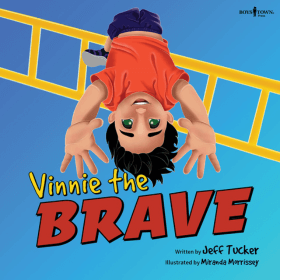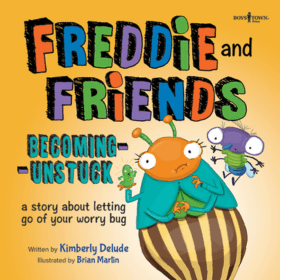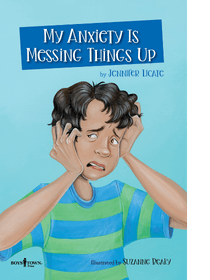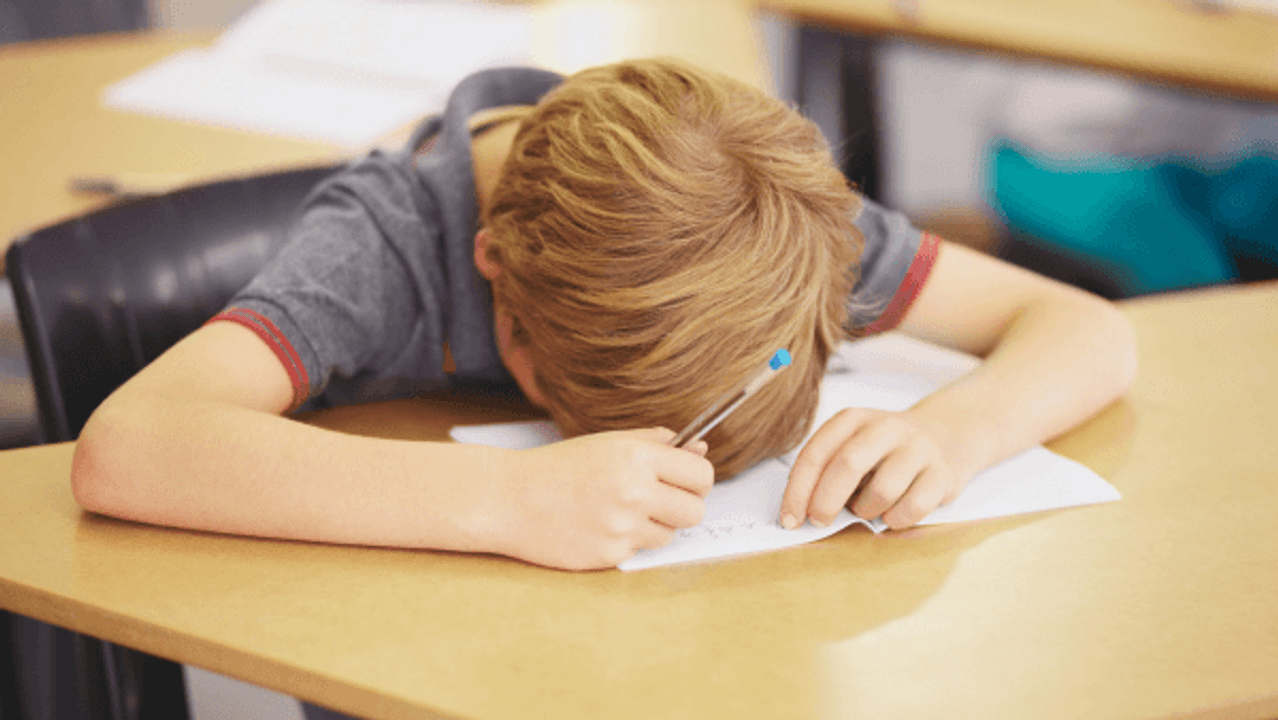Turn the Page on Anxiety: 5 Books That Help Kids Feel in Control
Anxiety is one of the most common emotional challenges children face, and it can show up in many ways—from avoidance and irritability to physical symptoms like stomachaches. Fortunately, books can be powerful tools to help children understand and cope with anxious feelings. Here are five titles from Boys Town Press that support emotional regulation and resilience in young readers.
 Stress Stinks by Bryan Smith
Stress Stinks by Bryan Smith
Amelia feels overwhelmed by the pressures of school, sports, and responsibilities at home. As her stress builds, she begins to experience “stinking thinking”—negative thoughts that make everything feel worse. With guidance, Amelia learns how to recognize these thoughts and reframe them in more positive, helpful ways.
This book helps children (grades K-6) understand the connection between thoughts and emotions, and teaches them how to shift their mindset to reduce stress and anxiety. It’s a great resource for building emotional awareness and resilience in kids.
Tip: After reading, create a “Stinking Thinking vs. Positive Thinking” chart with kids to help them practice turning anxious thoughts into empowering ones.
 Molly and the Runaway Trolley by Ashley Bartley
Molly and the Runaway Trolley by Ashley Bartley
Molly’s anxiety feels like a runaway streetcar—fast, overwhelming, and out of control. Whenever she faces a test or an unexpected change, she’s swept away by worry, fear, and doubt. But when Molly meets a wise trolley operator, she learns that she holds the power to slow things down. Through breathing techniques, mindfulness, and reframing her thoughts, Molly discovers how to take control of her anxiety and bring the trolley to a stop.
This empowering story helps children (grades K-5) understand the physical and emotional sensations of anxiety and teaches them practical self-regulation strategies. It reassures kids that while anxiety can feel overpowering, they have the tools to manage it and regain control.
Tip: Use the story to teach kids how to pause and ask themselves, “What are my choices?” when they feel anxious or stuck.
 Vinnie the Brave by Jeff Tucker
Vinnie the Brave by Jeff Tucker
Vinnie is known for being fearless—he climbs high, catches bugs, and faces spooky things without flinching. But there’s one fear he hides: speaking up in class. When he doesn’t understand something, he stays silent, afraid of being judged or laughed at. As his grades slip, Vinnie and his teacher come up with a secret signal to ask for help. But when the signal fails, Vinnie must decide whether to stay quiet or find the courage to speak up.
This story helps children (grades K-5) recognize that even brave people have fears, and that asking for help is a courageous act. It addresses social anxiety and fear of judgment in a relatable, empowering way.
Tip: Encourage kids to make a “Bravery Ladder” with small steps they can take toward facing a fear, just like Vinnie.
 Freddie and Friends: Becoming Unstuck by Kimberly Delude
Freddie and Friends: Becoming Unstuck by Kimberly Delude
Freddie’s new friend, Betsy the Beetle, is always being followed around by Murray, an annoying worry bug. Murray is constantly whispering “what ifs” into Betsy’s ear, making her nervous about everything from math class to music performances. The more Betsy worries, the bigger Murray grows. Eventually, Betsy is so overwhelmed with worry she falls flat on her back and gets stuck—literally! But with help from her friends, Betsy learns how to challenge her anxious thoughts, take back control, and get herself unstuck!
This story helps children (grades K-5) understand how anxiety can grow when left unchecked and teaches them to recognize and respond to anxious thoughts with calming strategies and positive thinking. It encourages self-awareness and peer support.
Tip: After reading, have kids identify their own “worry bugs” and use the book’s FLIP method to practice flipping anxious thoughts into empowering ones.
 My Anxiety Is Messing Things Up by Jennifer Licate
My Anxiety Is Messing Things Up by Jennifer Licate
Oscar is a high-achieving middle schooler who excels in academics, sports, music, and friendships—but beneath the surface, he’s struggling. His drive for perfection leads to intense anxiety, sleepless nights, and emotional outbursts that begin to affect his relationships. When a caring teacher invites him to join a school group for students dealing with anxiety, Oscar must decide whether he’s ready to seek help or continue hiding his struggles.
This quick-read chapter book is ideal for older children (grades 4–8) and helps normalize anxiety by showing how it can affect even the most successful students. It offers realistic examples and empowering strategies for managing stress, perfectionism, and emotional overwhelm.
Tip: Pair the book with its companion Teacher and Counselor Activity Guide to spark deeper conversations and self-reflection. Use journaling prompts or group discussions to help students identify their own stressors and coping tools.
Helping children understand and manage anxiety is a journey, and these books offer a gentle, engaging way to start important conversations. Whether you're a parent, teacher, or counselor, incorporating these stories into your routine can make a meaningful difference.
New on the Blog
Gratitude Is a Skill - Not Just a Season
As the holidays approach, gratitude tends to take center stage. Whether it’s a classroom activity, a...
Creating a Culture of Kindness in Your School
As a school counselor, you play a pivotal role in shaping the emotional climate of your school. When...
Turn the Page on Anxiety: 5 Books That Help Kids Feel in Control
Anxiety is one of the most common emotional challenges children face, and it can show up in many way...
Communication Is Key: Why Early and Positive Communication with Parents Really Matters
When it comes to helping kids grow, both in and out of the classroom, one of the most powerful tools...
The Peace Playbook: Working as a Team to Create a Bully-Free Classroom
It’s that time of year again! Crisp mornings and earlier sunsets signal more than just the end of su...
Accentuate the Positive: Using Praise to Change Children's Negative Behavior
The following is a Q&A with Boys Town Behavioral expert, Dr. Patricia Gisbert, on some of the mos...





